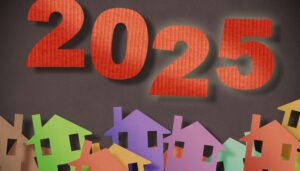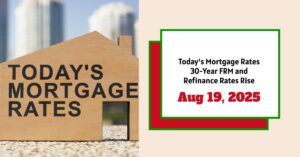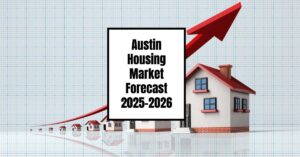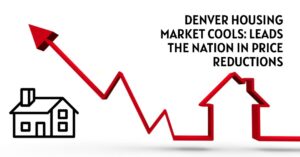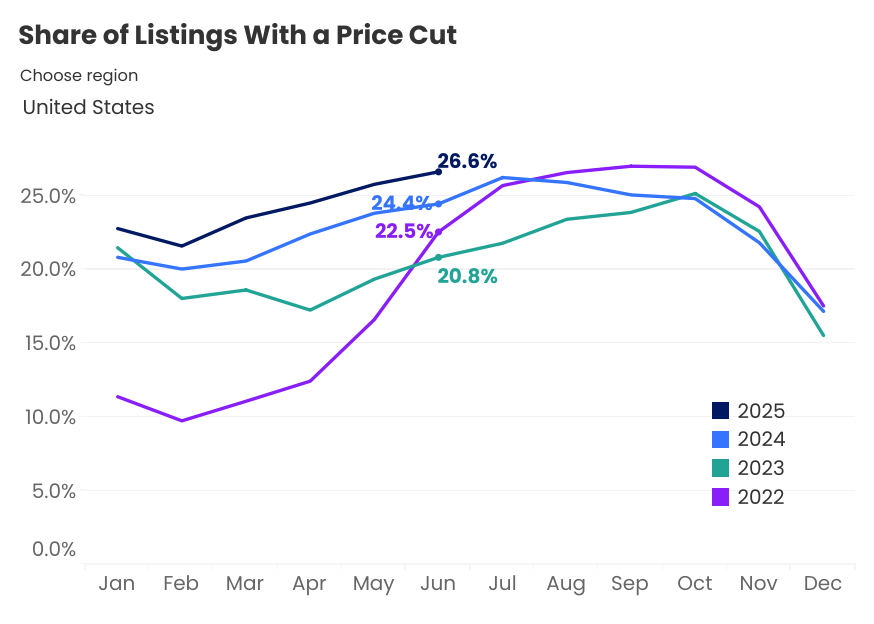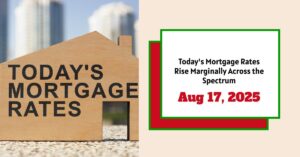If you're trying to figure out where the hottest housing markets are right now, the answer is often found in the ZIP codes. The following top 10 ZIP codes in the U.S. showcase where buyer demand is highest and homes are selling the fastest. For 2025, the spotlight shines brightly on Beverly, Massachusetts (01915), along with other areas primarily in the Northeast and Midwest, highlighting a trend of buyers seeking value, location, and lifestyle.
Hottest Housing Markets: Top ZIP Codes for 2025 Revealed
Each year, I eagerly anticipate the Realtor.com's Hottest ZIP Codes report to get a pulse on the real estate market. It provides some serious insight into where people want to live and what they're prioritizing when buying a home. This year's report is especially interesting because it underscores how buyers are adapting to higher mortgage rates and affordability challenges. I've always believed that people are smart about where they put their money when it comes to real estate, and these ZIP codes tell a story of buyers strategically seeking value, even in competitive markets.
How Are The “Hottest ZIP Codes” Determined?
Realtor.com uses a unique methodology to identify these sought-after areas. I like how it combines two key factors so it is a well-rounded process:
- Market Demand: Measured by the number of unique viewers per property on Realtor.com. The more people looking at a property, the hotter the market.
- Pace of the Market: Measured by how long a listing stays active on Realtor.com. The faster homes sell, the more competitive the ZIP code becomes.
Basically, the hottest ZIP codes have high buyer interest (lots of views) and quick sales (homes don't stay on the market long). The below table lists the top 10 hottest ZIP codes of 2025.
| Rank | ZIP Code | City |
|---|---|---|
| 1 | 01915 | Beverly, MA |
| 2 | 08053 | Marlton, NJ |
| 3 | 01453 | Leominster, MA |
| 4 | 63021 | Ballwin, MO |
| 5 | 07470 | Wayne, NJ |
| 6 | 44149 | Strongsville, OH |
| 7 | 06611 | Trumbull, CT |
| 8 | 02864 | Cumberland, RI |
| 9 | 06074 | South Windsor, CT |
| 10 | 43209 | Bexley, OH |
Key Trends & Takeaways from the List
Here's what I found most interesting about this year's hottest ZIP codes report:
- Northeast and Midwest Domination: For the third year in a row, the South and West are absent from the list. The Northeast and Midwest continue to see high demand and limited housing supply.
- Suburban Appeal: The hottest ZIP codes are largely in desirable suburban areas, offering a slower pace of life without sacrificing access to major economic hubs.
- Homes are Flying Off the (Virtual) Shelf: Listings in the top ten ZIPs are seeing 3.3 to 5.2 times as many views as the average U.S. property, and homes are selling 30–42 days faster.
- Tight Inventory: Inventory is way down in these hot markets, almost 59% below pre-pandemic levels. This means more competition and faster sales for the properties that are listed.
The Top 10 Hottest Housing Markets by ZIP Code in 2025
Let's dive a little deeper into each of these top 10 ZIP codes and see what makes them so desirable:
- Beverly, MA (01915)
- Metro Area: Boston-Cambridge-Newton, MA-NH
- The most popular ZIP code in the U.S. for 2025.
- Median Listing Price: $746,000
- Days on Market: 16
- Viewers per Property vs. US Average: 4.6x
- Why it's hot: Good schools, coastal charm, and commuter rail access to Boston make Beverly a desirable option for those seeking a balance between suburban living and city access.
- Marlton, NJ (08053)
- Metro Area: Philadelphia-Camden-Wilmington, PA-NJ-DE-MD
- Median Listing Price: $495,000
- Days on Market: 17
- Viewers per Property vs. US Average: 3.9x
- Why it's hot: Marlton offers a more affordable option compared to other areas in the Philadelphia metro, with good schools and a convenient location.
- Leominster, MA (01453)
- Metro Area: Worcester, MA
- Median Listing Price: $441,000
- Days on Market: 18
- Viewers per Property vs. US Average: 4.0x
- Why it's hot: Leominster attracts buyers seeking a lower cost of living compared to Boston, while still having access to the city's amenities. Leominster is also well connected to the more popular Zip code of Boston.
- Ballwin, MO (63021)
- Metro Area: St. Louis, MO-IL
- Median Listing Price: $350,000
- Days on Market: 22
- Viewers per Property vs. US Average: 3.8x
- Why it's hot: Good schools and a family-friendly atmosphere make Ballwin a popular choice in the St. Louis metro.
- Wayne, NJ (07470)
- Metro Area: New York-Newark-Jersey City, NY-NJ
- Median Listing Price: $664,000
- Days on Market: 22
- Viewers per Property vs. US Average: 3.3x
- Why it's hot: Wayne offers a suburban lifestyle with a relatively shorter commute to New York City, making it a desirable option for those working in the city. This makes living easier and lifestyle, flexible.
- Strongsville, OH (44149)
- Metro Area: Cleveland, OH
- Median Listing Price: $423,000
- Days on Market: 25
- Viewers per Property vs. US Average: 5.2x
- Why it's hot: Strongsville provides a family-friendly” environment with strong schools and access to the amenities of Cleveland.
- Trumbull, CT (06611)
- Metro Area: Bridgeport-Stamford-Danbury, CT
- Median Listing Price: $666,000
- Days on Market: 25
- Viewers per Property vs. US Average: 5.1x
- Why it's hot: Trumbull balances suburban living with good schools and a reasonable commute to New York City.
- Cumberland, RI (02864)
- Metro Area: Providence-Warwick, RI-MA
- Median Listing Price: $534,000
- Days on Market: 26
- Viewers per Property vs. US Average: 3.6x
- Why it's hot: Cumberland offers more affordable housing compared to Boston, with a good location near the city of Providence, making it especially suitable for renters.
- South Windsor, CT (06074)
- Metro Area: Hartford-West Hartford-East Hartford, CT
- Median Listing Price: $406,000
- Days on Market: 27
- Viewers per Property vs. US Average: 5.0x
- Why it's hot: Good schools and a family-oriented community make South Windsor an attractive choice for those seeking a suburban lifestyle near Hartford.
- Bexley, OH (43209)
- Metro Area: Columbus, OH
- Median Listing Price: $439,000
- Days on Market: 25
- Viewers per Property vs. US Average: 3.4x
- Why it's hot: Bexley is known for its historic charm, walkable streets, and good schools, attracting buyers looking for something special in Columbus. It also offers a small-town feel with easy access to metropolitan amenities.
The Value Proposition: What Buyers Want
It's interesting to me that even with higher mortgage rates, people are still willing to jump into the housing market in these areas. Why is that? Well, this year's hottest ZIP codes highlight what buyers are prioritizing:
- Value for Money: Many buyers are looking for areas where they can get more house for their money compared to the surrounding metro area.
- Suburban Lifestyle with Urban Access: People want the space and safety of the suburbs, but they still want to be able to easily get to the city for work or entertainment.
- Good Schools: This is always a top priority for families with children.
- Community: People want to live in neighborhoods where they feel connected to their neighbors and have a sense of belonging.
Big-City Buyers Seeking Suburban Appeal
It's also worth noting that a lot of the interest in these hottest ZIP codes is coming from people who already live in big cities. Buyers from metros like New York, Boston, and Washington, D.C., are looking to escape the high costs and fast pace of urban life, without completely giving up access to those cities. As someone who has lived in both urban and suburban areas, I completely understand this desire!
- New York City was the top out-of-metro source in 3 of the mentioned ZIP codes.
- Boston was the top out-of-metro source in 4 of the mentioned ZIP codes
- Washington, D.C. was the top out-of-metro source in 2 of the mentioned ZIP codes.
These people on average earn 50% more than the national median, making them highly competitive.
Who are these Buyers?
The buyers in the areas with hottest housing markets also share a few common characteristics:
- Higher-Income Households: The average household income in these ZIPs is around $114,000, much higher than the national average.
- Good Credit Scores: The average credit score in these areas is 759, compared to 748 nationwide.
- Larger Down Payments: Buyers in these ZIPs are putting down more money on their homes, likely to lower their monthly payments in this high-interest-rate environment.
- Established Homeowners: The average age of homeowners in these areas is 56, older than the national average, suggesting more experience and financial stability.
What Does This Mean For You?
Whether you're a buyer or a seller, understanding these trends can help you make informed decisions.
- For Buyers: If you're looking to buy in one of these hottest ZIP codes, be prepared for competition. Get pre-approved for a mortgage, work with a knowledgeable real estate agent, and be ready to move quickly.
- For Sellers: If you're selling in one of these areas, you're in a good position. Work with an experienced agent who can help you price your home competitively and market it effectively to attract the most offers.
Final Thoughts
The hottest housing markets are always changing, but some things remain constant. People want a good quality of life, a convenient location, and a sense of community. If you can find a ZIP code that offers those things, you're likely to find a place where homes are selling quickly and prices are holding steady.
While this report gives us a snapshot of the hottest markets right now, it's always important to do your own research and consider your individual needs and priorities when making real estate decisions. I encourage you to explore these ZIP codes and others, talk to local residents and agents, and see if any of these areas might be a good fit for you.
Invest in the Hottest Housing Markets of the U.S.
Discover high-quality, ready-to-rent properties designed to deliver consistent returns.
Contact us today to expand your real estate portfolio with confidence.
Contact our investment counselors (No Obligation):
(800) 611-3060
Recommended Read:
- Top 10 Hottest Housing Markets Where Home Prices Are Soaring
- Housing Predictions 2025 by Warren Buffett's Berkshire Hathaway
- New Tariffs Could Trigger Housing Market Slowdown in 2025
- Housing Market Forecast 2025: Affordability Crisis Will Continue
- Lower Mortgage Rates Will Reignite the Housing Demand in 2025
- NAR Predicts 6% Mortgage Rates in 2025 Will Boost Housing Market
- Housing Market Forecast for the Next 2 Years: 2024-2026
- Housing Market Predictions for the Next 4 Years: 2025 to 2028
- Housing Market Predictions for Next Year: Prices to Rise by 4.4%
- Housing Market Predictions for 2025 and 2026 by NAR Chief
- Real Estate Forecast Next 5 Years: Top 5 Predictions for Future
- 2008 Forecaster Warns: Housing Market 2024 Needs This to Survive
- Real Estate Forecast Next 10 Years: Will Prices Skyrocket?
